Click on image for full size
Corel Photography
Earth's Early Ocean
An ocean began to form on Earth as soon as the temperature fell from very hot, to about room temperature, a temperature where liquid water is stable. According to the
Goldilocks theory, Earth is at just the right distance from the sun for the temperature of the surface to be appropriate for the formation of liquid water. The presence of running water influenced the rest of the gases in the atmosphere, which began to dissolve into the forming ocean. By this time Earth was busy generating its
secondary atmosphere. These atmospheric gases came out of a volcano. All volcanoes are different but in general those gases would include H
2O, CO
2, SO
2, H
2S, HCl, N
2, NO
2.
The process of dissolving was dictated by a chemical balance called "Henry's Law". Henry's Law states that
- The amount of dissolved molecules of a particular species that will form in water depends upon the pressure (the weight) of that species of gas in the atmosphere (how much of it is in the atmosphere) times the solubility properties of that species (how readily it will dissolve).
Gases such as CO
2, SO
2, and HCl form
acids when dissolved in water. These acids would be HCO
3-, HSO
3-, and H
3O
+. Such acids would immediately be neutralized via
reaction with the surface minerals of the Earth, but the addition of so much acid to both the land and sea changed the pH of the ocean and surface from a reducing environment (hydrogen-based) to an oxidizing environment (oxygen-based).
Scientists think that the Earth's secondary atmosphere may have come to be dominated by N2 because it alone does not readily dissolve in water.
You might also be interested in:
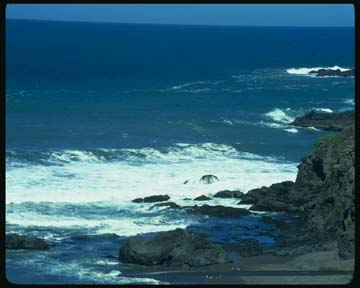
As the temperature started to cool down, eventually the ocean began to form. As as soon as the temperature fell to about room temperature, then rain could begin. The presence of running water influenced
...more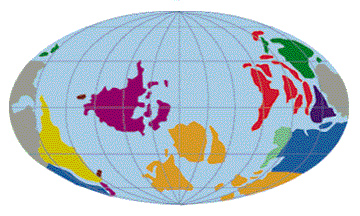
The Archean is the name of the age which began with the forming Earth. The duration of the Archean, 2.8 billion years, is more than half the expected age of the Earth. We don't know much about this period,
...more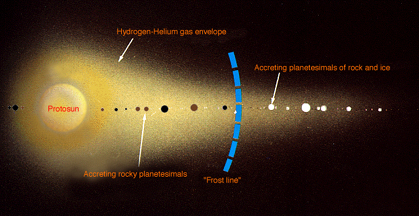
There are quite a few theories about the origin of the heavy molecules which comprise the Earths atmosphere today. Since all the planets including Earth were still forming during the Suns T-Tauri phase,
...more
We all know that salt is a big part of the ocean water today. Two things help scientists figure out what chemicals may have been part of the Earth's early oceans. Igneous rocks are made of iron, aluminum,
...more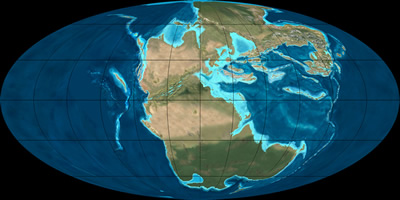
This period of time in Earth's history is a period when dinosaurs roamed the Earth. This period lasted 37 Million years. During this time, the continents we know today were combined into a giant continent
...more
An ocean began to form on Earth as soon as the temperature fell from very hot, to about room temperature, a temperature where liquid water is stable. According to the Goldilocks theory, Earth is at just
...more
Eventually, as with the development of photosynthesis along sulfur and methane pathways, where sulfur and methane products are produced, photosynthesis along the oxygen pathway, where oxygen is produced,
...more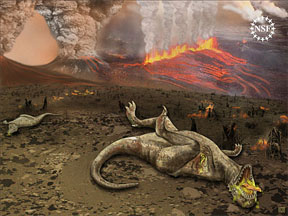
Why did the dinosaurs go extinct? No one knows for sure, and scientists have come up with a number of theories to explain why the dinosaurs suddenly died out about 65 million years ago. The most prominent
...more













